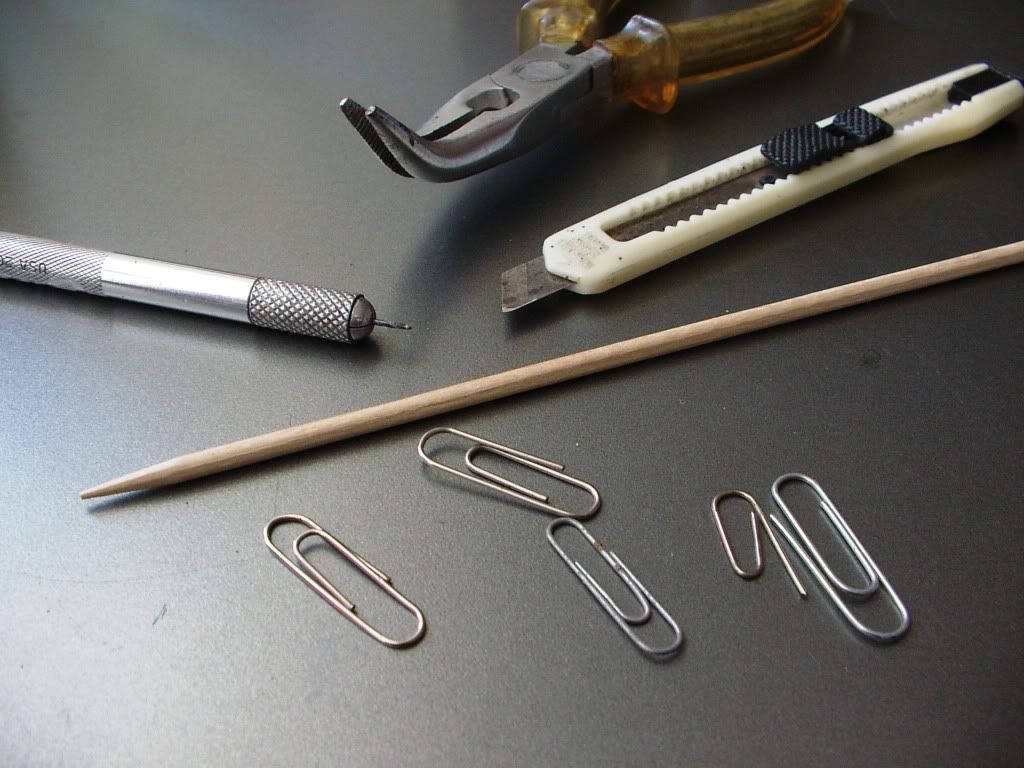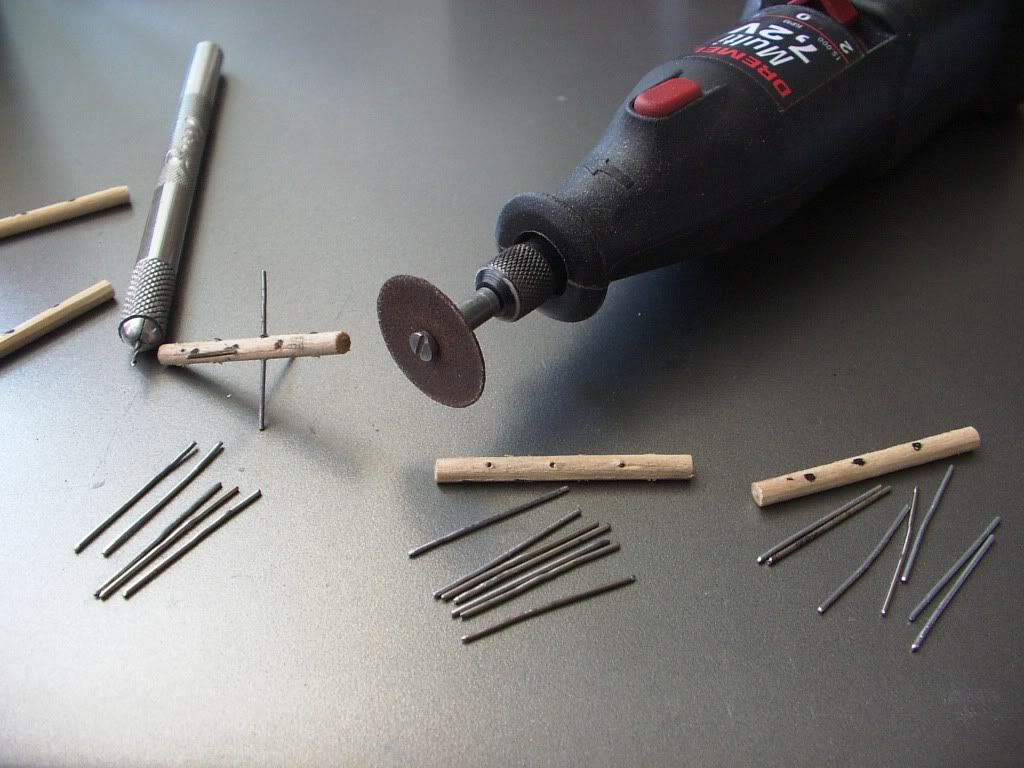The cheval de frise
Posted: Thu Nov 04, 2010 7:54 pm
In the Middle and Modern Ages, the armies of the Low Countries suffered from an acute shortage of cavalry. To compensate for that, they developed a portable defensive system made of a wooden frame and several crossed wooden shafts that came to be known as the cheval de frise, the «Frisian horse».
The Early Restauration Portuguese list (FoGR «Wars of Religion», page 78 ) allows the use these portable defences - which the Portuguese used to call cavalinho de pau, «little wooden horse» -, so I roll my sleeves up and got down to business!
Material:
Small metal clips, a wooden kebab spit, X-acto, a clamp and a 1 mm drill.

First, I cut the spit in 4 cm sections. Using a pencil, I made small markings at regular intervals. These pieces will be the shafts. Then I unbent the clips with the clamp.
With a Dremel’s rotary tool equipped with a cutting disk, I picked up one unfolded clip and cut it into 2,5 cm long sections. These would be the chevaux’s shafts. Each clip made for 3 shafts. With the cutting disk, I sanded the spikes’ edges so that they would enter the holes more easily.
To make sure the holes were aligned and perpendicular, I drilled the first hole right in the centre of the shaft and then I inserted the first shaft. This served as a guide where to drill the remaining holes. After I finished drilling, I inserted the shafts into the frame and fixed them in place with glue.
The picture shows, from right to left, a cheval frame with markings, a cheval frame with holes in it and another one where I used the drilling trick that worked just fine.

The actual chevaux de frise had something like 28 spikes but I stuck to 7, which is fine for game’s sake.
After I finished my carpenter’s job, I sprayed the chevaux with surface primer and then painted them in a mix of brown hues. Another spraying with matt varnish and my little wooden horses were done!

Time spent in scratch building: 2:30h
The Early Restauration Portuguese list (FoGR «Wars of Religion», page 78 ) allows the use these portable defences - which the Portuguese used to call cavalinho de pau, «little wooden horse» -, so I roll my sleeves up and got down to business!
Material:
Small metal clips, a wooden kebab spit, X-acto, a clamp and a 1 mm drill.

First, I cut the spit in 4 cm sections. Using a pencil, I made small markings at regular intervals. These pieces will be the shafts. Then I unbent the clips with the clamp.
With a Dremel’s rotary tool equipped with a cutting disk, I picked up one unfolded clip and cut it into 2,5 cm long sections. These would be the chevaux’s shafts. Each clip made for 3 shafts. With the cutting disk, I sanded the spikes’ edges so that they would enter the holes more easily.
To make sure the holes were aligned and perpendicular, I drilled the first hole right in the centre of the shaft and then I inserted the first shaft. This served as a guide where to drill the remaining holes. After I finished drilling, I inserted the shafts into the frame and fixed them in place with glue.
The picture shows, from right to left, a cheval frame with markings, a cheval frame with holes in it and another one where I used the drilling trick that worked just fine.

The actual chevaux de frise had something like 28 spikes but I stuck to 7, which is fine for game’s sake.
After I finished my carpenter’s job, I sprayed the chevaux with surface primer and then painted them in a mix of brown hues. Another spraying with matt varnish and my little wooden horses were done!

Time spent in scratch building: 2:30h